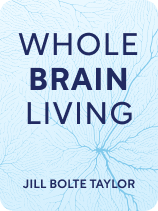

This article is an excerpt from the Shortform book guide to "Whole Brain Living" by Jill Bolte Taylor. Shortform has the world's best summaries and analyses of books you should be reading.
Like this article? Sign up for a free trial here.
Do you want to get mentally stronger? What is the Brain Huddle technique?
Coined by Jill Bolte Taylor, the Brain Huddle is a tool that helps keep the four characters in your brain in check. After using this technique, you’ll walk away feeling at your best because the parts of your brain are working as a team.
Continue reading to learn how to take full advantage of the Brain Huddle tool and an alternative process called the RAIN technique.
BRAIN Technique
Taylor’s main strategy for attuning yourself to your four characters is what she calls the “Brain Huddle.” This means mentally getting the four characters together to listen to their input, and then agreeing on a plan—much like an athletic team’s huddle during a game. Taylor recommends using the acronym BRAIN and breaks down each step as follows:
B—Breathe: Take some deep breaths to take control of any automatic initial responses your body may be having. Remember that after 90 seconds, the physiological response to an emotion will pass, and you’ll then have the opportunity to decide how to act next.
R—Recognize: Taylor says to recognize what character is dominating your mindset. Think about their personalities and reflect on your behavior in the moment.
A—Appreciate: Next, Taylor recommends appreciating the dominant character as well as your other characters simply for existing. Remember that each has value and importance in your life.
I—Inquire: At this point, let each character express their point of view by thinking through the scenario from the perspective of each one. Taylor says that after consideration, decide on the best course of action—ideally aiming for a peaceful resolution.
N—Navigate: The last step is navigating the outcome of your decision in the previous step. Taylor points out that regardless of your choices, you can’t control other people’s reactions, but you can respond thoughtfully. For example, if you’re in the middle of an argument with your parent, who insists on staying in a hostile and fear-driven mindset, you may need to put your most empathic, compassionate Character 4 forward to respond to their Character 2 and de-escalate the conflict.
Comparing the BRAIN Technique to the RAIN Mindfulness Technique
Taylor’s BRAIN technique is similar to other mindfulness strategies that focus on an initial phase of slowing down and increasing self-awareness before proceeding. One example is meditation coach Tara Brach’s RAIN technique. In 10% Happier, Dan Harris says that the RAIN technique helps him overcome obstacles by increasing his mindfulness in difficult situations at work or other areas of daily life.
Given the similar overarching goals of the RAIN and BRAIN techniques, both strategies may be helpful at different times depending on whether you hope to reach a more detached acceptance of your emotions (better suited to RAIN) or take strategic action in response to your assessment (better suited to BRAIN).
Here, we’ll look at the RAIN steps and how they compare to Taylor’s BRAIN strategy:
R: Recognize what you’re feeling. This parallels Taylor’s step of recognizing which character is currently dominating your thoughts or feelings. Although RAIN doesn’t include a “breathe” step at the beginning, taking some deep breaths could be a helpful tool to think clearly before the “Recognize” step in this technique as well.
A: Allow the emotion to be what it is and don’t feel guilty about it. This step aligns closely with Taylor’s third step of appreciating all of your characters regardless of the circumstances.
I: Investigate by examining how the emotion feels in your body. This step is more closely related to Taylor’s “Recognize” step, rather than her “Inquire” step, which involves considering each of your characters’ perspectives and formulating a plan.
N: Practice non-identification by acknowledging that whatever emotion you’re feeling doesn’t define you and won’t last forever. Or alternatively, nurture the emotion with self-compassion. This part of the RAIN technique diverges the most from Taylor’s because it emphasizes acceptance rather than strategizing an intentional outward action (as in Taylor’s “Inquire” and “Navigate” steps).

———End of Preview———
Like what you just read? Read the rest of the world's best book summary and analysis of Jill Bolte Taylor's "Whole Brain Living" at Shortform.
Here's what you'll find in our full Whole Brain Living summary:
- How you can choose to access different parts of your brain
- The four areas of the brain that perceive and navigate the world differently
- How to achieve emotional well-being by getting to know your brain better






